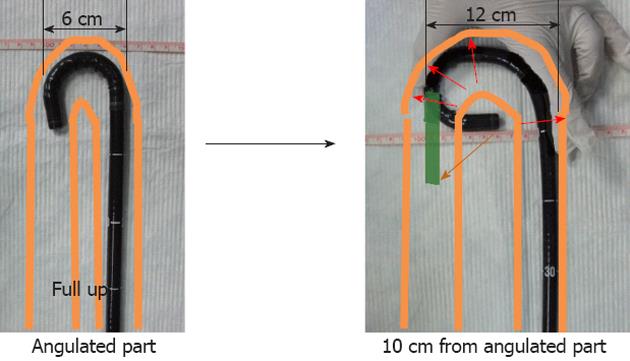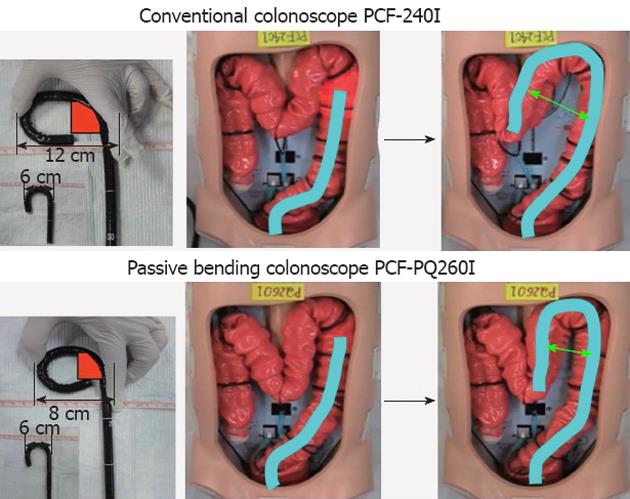Copyright
©2012 Baishideng Publishing Group Co.
World J Gastroenterol. Aug 28, 2012; 18(32): 4454-4456
Published online Aug 28, 2012. doi: 10.3748/wjg.v18.i32.4454
Published online Aug 28, 2012. doi: 10.3748/wjg.v18.i32.4454
Figure 1 Water Navigation Colonoscopy.
Red arrows mean buoyancy; Green arrows mean gravity of water; White arrows mean gravity of endoscope. UPD: Endoscope position detecting unit.
Figure 2 Conventional scope stretches the “hairpin” bend and causes pain.
Red arrows mean the tension of colonoscope; Brown arrow shows that the tip of colonoscope stretches in the colonic lumen after passing the hairpin bend.
Figure 3 During negotiation of “hairpin” bend of the splenic flexure, “passive- bending colonoscope” does not stretch the bend.
Green arrow shows the radius of colonoscope. Passive bending colonoscope has smaller one.
Figure 4 Sigmoid malrotation and loops, malrotation and mesocolon descendens, ascendens of paitents.
A: 78 years old female has sigmoid malrotation and loops at splenic flexure; B: 70 years old female has sigmoid malrotation and mesocolon descendens; C: 70 years old male has mesocolon descendens and ascendens.
- Citation: Mizukami T, Ogata H, Hibi T. “Passive-bending colonoscope” significantly improves cecal intubation in difficult cases. World J Gastroenterol 2012; 18(32): 4454-4456
- URL: https://www.wjgnet.com/1007-9327/full/v18/i32/4454.htm
- DOI: https://dx.doi.org/10.3748/wjg.v18.i32.4454












